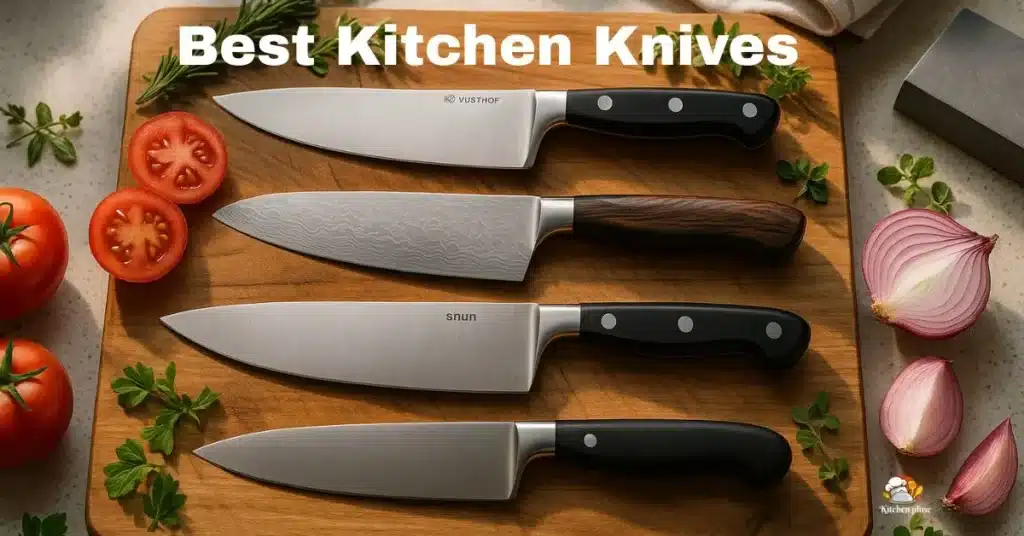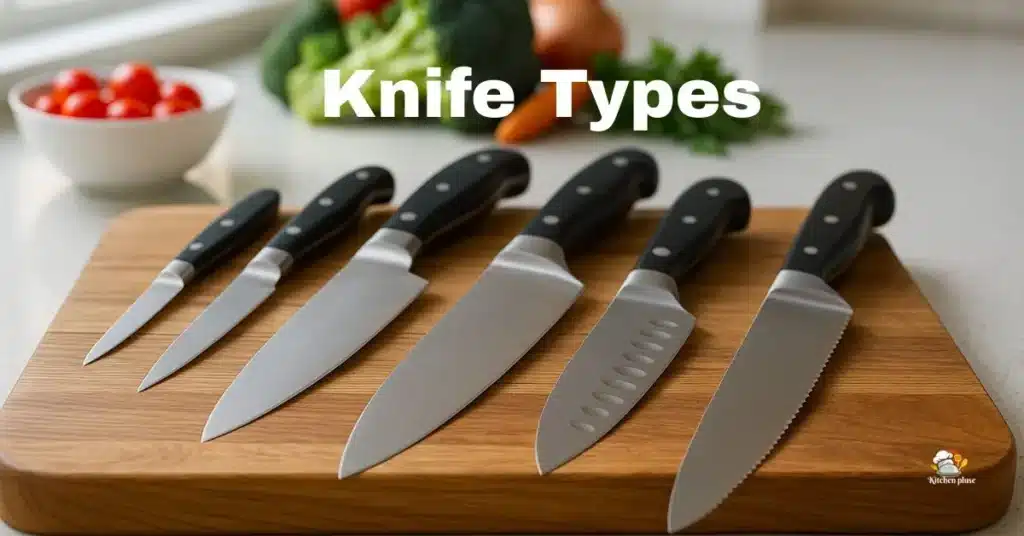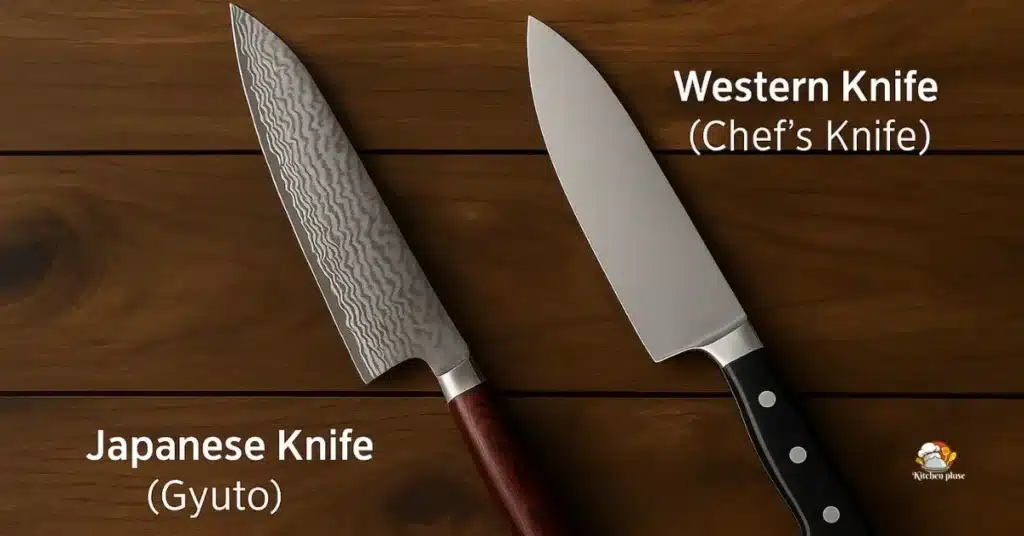A safe kitchen starts with how you handle your knives. Knife safety means using, cleaning, and storing them the right way to avoid injuries and keep your blades sharp for years.
Every year, more than 350,000 people in the U.S. are hurt in kitchen knife accidents, according to the National Sanitation Foundation (NSF) — yet most of these are preventable.
When you cook, your knife is your most powerful tool — and also the most dangerous. With a few smart habits, you can protect your hands, your family, and your knives.
This complete Knife Safety Tips and Storage Guide 2025 from KitchenPulse will help you:
- Hold a knife safely while cutting food.
- Clean knives the right way to prevent rust and germs.
- Store knives properly with blocks, drawers, or magnetic strips.
- Use safety tools such as cut-resistant gloves.
Whether you’re a new home cook or a professional chef, these steps will help you work confidently and keep your kitchen safer than ever.
Ready to upgrade your tools?
See our Best Kitchen Knives 2025 – Buyer’s Guide before you choose.
Now that you understand why knife safety matters, let’s start with the foundation — the basic rules every home cook and chef should follow to stay safe in the kitchen.
Knife Safety Basics
Knife safety is the foundation of every safe kitchen. It’s about using, cleaning, and storing knives correctly to prevent cuts and keep your tools sharp for longer.
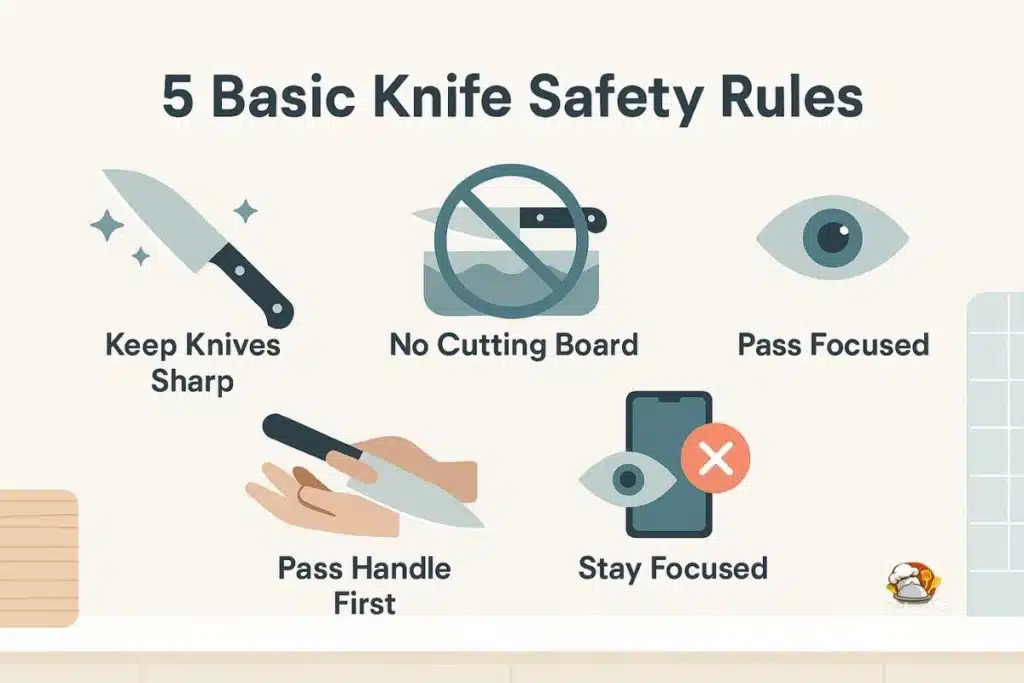
Following a few simple safety steps helps you cook faster, safer, and with more confidence every day.
What Are the Basic Knife Safety Rules?
Knife safety rules are simple steps that help you avoid cuts and kitchen accidents.
Here are five important tips every cook should know:
- Keep your knives sharp. Dull blades slip and cause injuries.
- Use a cutting board on a flat, dry surface.
- Never leave knives uncovered in a sink or drawer.
- Pass a knife handle-first to someone else.
- Stay focused while chopping — no phone or distraction.
Quick Fact: In the U.S., most home-kitchen knife accidents happen because of careless handling or poor storage (Source: NSF).
How to Hold a Knife Safely (Step-by-Step)
Holding a knife the right way gives you control and keeps your fingers safe.
- Hold the handle firmly and place your thumb and index finger on the blade’s base.
- Curl the fingers of your guiding hand like a claw to protect them.
- Cut with a smooth, rocking motion while keeping the tip on the board.
Pro Tip: Wear cut-resistant gloves for better grip and safety — the same type professional chefs use.
Knife Safety for Kids
If your children help in the kitchen, make their space safe with these simple rules:
- Give them small, rounded-tip knives made for kids.
- Teach slow, steady cutting — no fast chopping.
- Keep adult knives on a magnetic strip or locked drawer.
- Always supervise kids while they cut food.
Common Kitchen Knife Accidents and How to Avoid Them
Most injuries happen when people rush, use dull blades, or store knives carelessly.
To stay safe:
- Keep knives sharp.
- Work slowly and focus.
- Use the right knife for each task.
- Store knives properly after use.
Remember: Safe kitchens aren’t built by luck — they’re built by good habits.
Once you’ve mastered safe handling, the next step is learning how to clean and maintain your knives properly. A clean, dry knife isn’t just sharper — it’s safer and lasts much longer.
Cleaning and Handling Safety
Proper knife cleaning and handling prevent rust, bacteria, and kitchen injuries.
It’s not just about washing — it’s about protecting the blade, keeping your tools sharp, and making every meal prep safer and easier.
What Is Knife Cleaning and Handling Safety?
Knife cleaning and handling safety means washing, drying, and caring for kitchen knives the right way to prevent rust, bacteria, and injuries.
Most knife damage happens when they are left wet, soaked, or cleaned the wrong way. These simple habits keep your knives sharper, safer, and longer-lasting.
How to Clean Kitchen Knives Properly
Follow these easy cleaning steps to keep your knives safe and sharp:
- Wash right after use with warm water and mild dish soap.
- Rinse and dry by hand using a soft microfiber cloth – never air-dry.
- Avoid soaking knives for long periods; it weakens steel and wood handles.
- Store only when fully dry to prevent rust or spots.
Pro Tip: Keep a towel nearby so you can dry each knife as soon as you clean it.
See FDA guidance on kitchen hygiene and cleaning tools to make sure your cleaning routine keeps knives safe and bacteria-free.
Can You Put Knives in the Dishwasher? (Myth vs Reality)
No, never put knives in a dishwasher.
- High heat and detergent dull the blade and damage the handle glue.
- Vibration can chip or bend the edge.
- Steam increases rust, even on stainless steel knives.
Better Way: Wash by hand, dry completely, and store safely.
Quick Fact: In the U.S., most knife warranties are voided if they are cleaned in a dishwasher.
How to Prevent Rust and Bacteria Build-up
Rust and bacteria can make knives unsafe and unhygienic. Use these simple tips:
- Apply food-safe mineral oil or camellia oil once a month.
- Use open knife racks that allow air flow instead of closed drawers.
- Clean handles with a soft cloth and vinegar-water mix.
- Never store wet knives, even stainless steel can rust over time.
Chef’s Note: A quick oil wipe after cleaning can double a knife’s lifespan.
Want to know which materials resist rust best?
Understand which knife materials resist rust.
Knife Hygiene Mistakes to Avoid
Most people clean blades but forget other risky areas. Avoid these common mistakes:
- Forgetting to wash knife handles.
- Storing knives in wet wooden blocks.
- Using the same board for raw meat and vegetables.
- Ignoring old sponges, which spread germs faster than knives.
Learn More About Knife MaintenanceTaking care of your knives keeps them sharper, safer, and longer-lasting.Regular sharpening prevents slips and accidents by giving you better control while cutting.
Expert Tip: Dull knives are riskier than sharp ones — they need more pressure and can easily slip.If you keep your blades clean and sharp, you’ll cut faster and safer.
Sharpening and maintenance keep knives safer longer.
Clean knives deserve smart storage. Proper knife organization prevents dull edges, keeps your kitchen tidy, and reduces the risk of accidents — let’s explore which storage solution fits your space best.
Knife Storage Solutions
Proper knife storage keeps your blades sharp, your hands safe, and your kitchen organized.It’s not just about where you place knives — it’s about reducing accidents, preventing rust, and saving valuable counter space with the right storage solution.
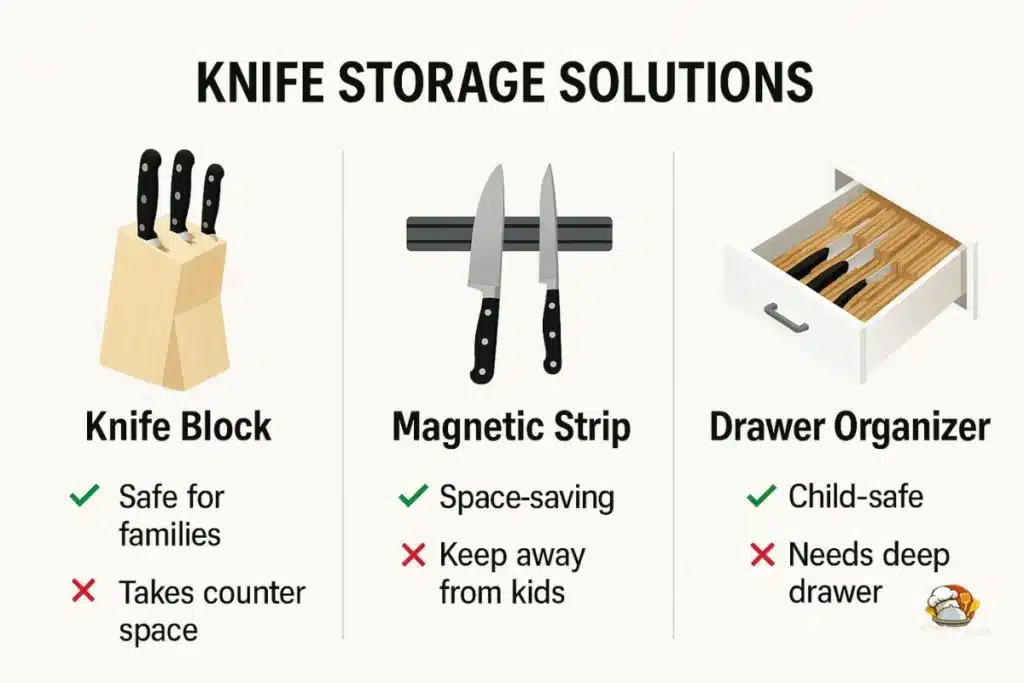
What Is the Best Way to Store Kitchen Knives?
The best way to store kitchen knives is to keep them organized, dry, and safe so they stay sharp and last longer. Proper knife storage helps prevent rust, save counter space, and reduce kitchen accidents. The three most popular options are knife blocks, magnetic strips, and drawer organizers.
Knife Block – Classic and Protective
A knife block is the most common and family-friendly storage choice.
Pros:
- Protects knife edges from dulling.
- Keeps all blades together and easy to grab.
- Ideal for families who cook daily.
Cons:
- Takes up counter space.
- Wooden blocks need occasional oiling to stay clean and dry.
Care Tip: Dry knives completely before placing them in the block. Clean the slots monthly to prevent moisture buildup.
Magnetic Strip – Modern and Space-Saving
A magnetic knife strip is perfect for small or minimalist kitchens.
Pros:
- Saves counter space.
- Allows knives to air-dry and stay rust-free.
- Adds a sleek, modern look to your kitchen.
Cons:
- Must be mounted securely.
- Keep out of children’s reach.
Safety Tip: Mount the strip above counter height to prevent accidents.
Drawer Organizer – Hidden and Child-Safe
A knife drawer organizer keeps blades safe and hidden while staying organized.
Pros:
- Great for homes with children.
- Prevents blades from dulling or scratching.
- Keeps drawers clutter-free.
Cons:
- Needs a deep drawer and dry environment.
- Clean regularly to prevent moisture buildup.
Tip: Choose a bamboo insert with air holes for better airflow.
Comparison Table – Knife Block vs Magnetic Strip vs Drawer Organizer
| Storage Type | Space Use | Safety | Maintenance | Best For |
| Knife Block | Medium | Moderate | Easy | Families |
| Magnetic Strip | Low | High (if mounted well) | Easy | Small kitchens |
| Drawer Organizer | Medium | High | Easy | Homes with children |
Final Tip: Choose the knife storage method that fits your kitchen size, family needs, and style.Good storage keeps your knives sharper, safer, and always ready to use.
Now that your knives are safely stored, it’s time to talk about personal protection. The right safety accessories — like gloves, guards, and travel rolls — make cooking both safer and more professional.
Knife Safety Accessories
Knife safety accessories protect both your hands and your blades, turning kitchen work into a safer and smoother experience.
From cut-resistant gloves to blade guards and knife rolls, these simple tools help prevent injuries, keep knives sharper for longer, and make storage and travel worry-free.
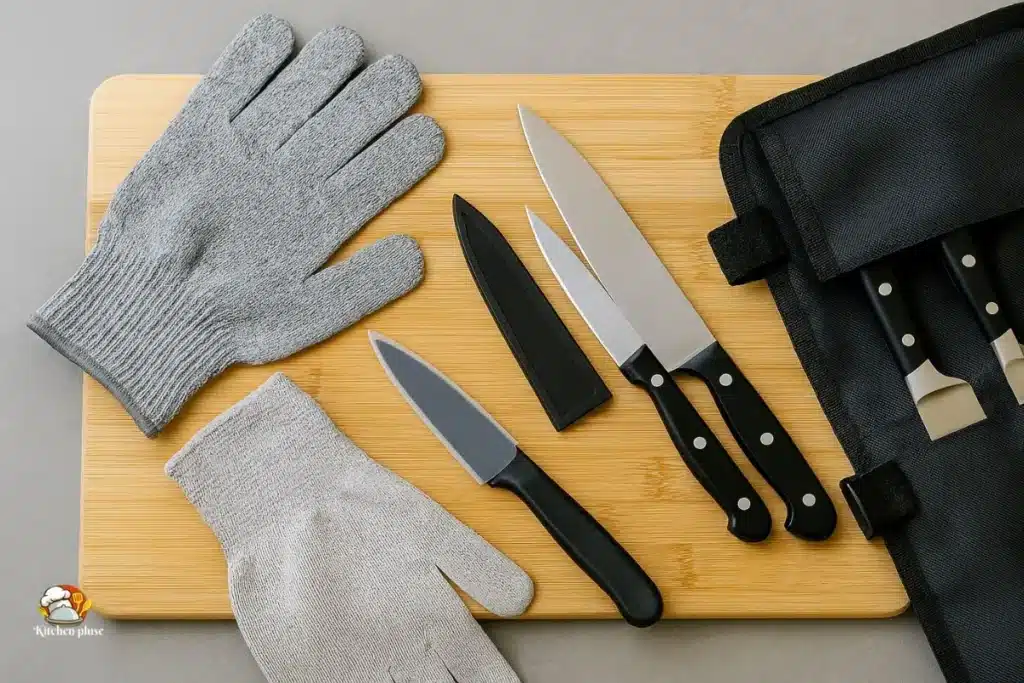
What Are Knife Safety Accessories?
Knife safety accessories are simple tools that help you protect your hands and blades while cooking.They make your kitchen safer, keep knives sharper, and reduce the chance of accidents.The most common accessories are cut-resistant gloves, knife blade guards, and travel storage cases.
Best Cut-Resistant Gloves for Home Cooks
Cut-resistant gloves keep your hands safe from slips while chopping food. They are made with EN388-rated materials such as Dyneema or Kevlar, trusted by both home cooks and chefs.
Look for these features:
- Flexible, tight fit for better grip.
- Food-safe, washable fibers.
- Level 5 cut resistance for top protection.
Pro Tip: Try holding a tomato — if it doesn’t slip, the glove fits perfectly.
Knife Blade Guards and Sheaths (Why You Need Them)
Knife blade guards and sheaths protect blades from damage and keep you safe while storing or traveling with knives.
Why Use Them:
- Keep edges sharp and prevent chipping.
- Avoid accidental cuts when reaching into drawers.
- Extend knife life by reducing friction and moisture exposure.
Material Tip: Use felt-lined or soft plastic sheaths for stainless or carbon-steel knives.
Top Picks:
- Wüsthof Blade Guard Set – Fits most chef’s knives.
- Dalstrong Edge Protector – Magnetic closure with soft lining.
Knife Carrying and Travel Storage Tips
If you carry knives for classes or work, use safe and legal storage.
Follow these steps:
- Use a padded knife roll or hard travel case.
- Place each knife in a protective sheath.
- Follow TSA rules – knives must be in checked luggage only.
- After travelling, clean and oil your knives before storing.
Chef’s Note: A foldable knife roll is light, durable, and easy to pack.
Even with the best care, knives don’t last forever. Learning how to dispose of them responsibly and maintain the rest ensures your kitchen stays safe and environmentally friendly.
Knife Disposal & Long-Term Care
Knife disposal and long-term care help you stay safe, protect the environment, and make your kitchen tools last longer.
By recycling old knives responsibly and maintaining your blades with regular care, you reduce waste, prevent injuries, and keep your kitchen sustainable for years to come.
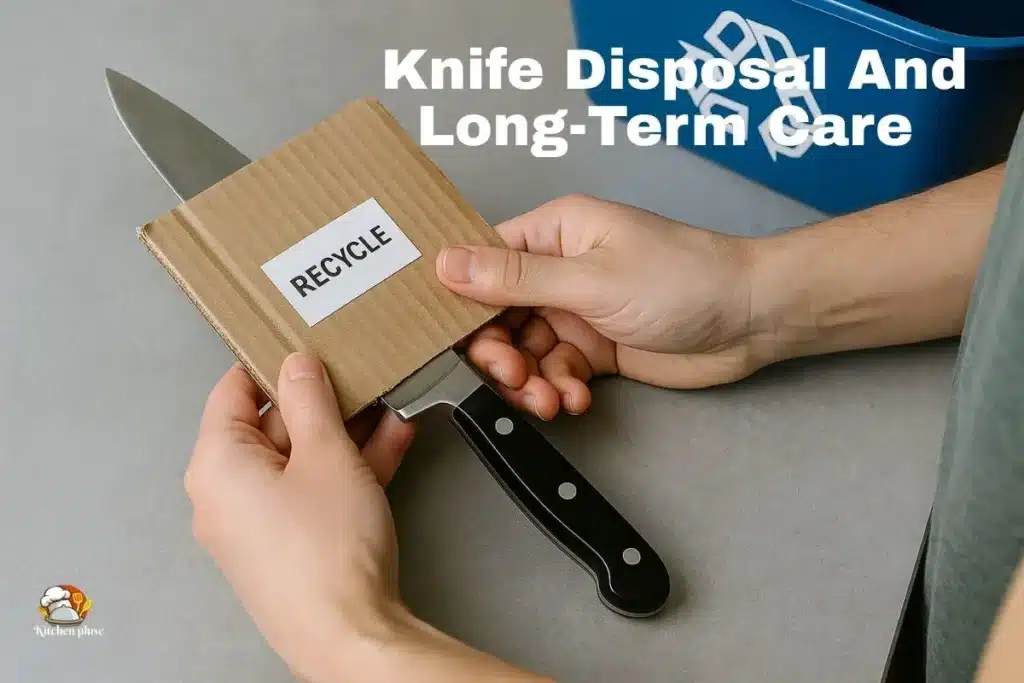
What Is Knife Disposal and Long-Term Care?
Knife disposal and long-term care means safely getting rid of old kitchen knives and keeping your tools sharp, rust-free, and safe for years. Proper disposal helps prevent injuries, supports eco-friendly recycling, and extends your knife’s lifespan.
How to Dispose of Old Knives Safely
The safest way to dispose of a knife is to cover the blade and follow your local recycling rules.
Step-by-step:
- Wrap the blade in cardboard or thick paper.
- Seal it with tape so the edge can’t cut through.
- Label it “Sharp Object.”
- Recycle at a metal or tool recycling center.
- Donate usable knives to a culinary school or community kitchen.
Safety Tip: Never drop uncovered knives in a trash bag — it can injure waste handlers.
Check local recycling rules from the EPA Recycling Guide to ensure safe and eco-friendly knife disposal.
Eco-Friendly Storage & Sustainability
Protect your knives — and the planet — by choosing sustainable materials.
Smart eco choices:
- 🌿 Use bamboo blocks or recycled wood organizers — renewable and biodegradable.
- 🚫 Avoid PVC magnetic holders that release microplastics.
- ♻️ Pick stainless-steel knives with recyclable handles.
- 🌱 Use eco-safe mineral oil instead of petroleum oils.
Green Tip: Repurpose old knife blocks as utensil holders instead of throwing them away.
Long-Term Maintenance Checklist
Keep every knife safe, sharp, and ready:
- Wash and dry right after use — no soaking.
- Sharpen monthly with a whetstone or honing rod.
- Oil wood handles each season.
- Inspect for chips or rust twice a year.
- Store in a dry, safe holder.
Pro Tip: Regular care can double a quality knife’s lifespan.
Final Advice:Knife care isn’t just about cleaning — it’s about responsible ownership.
Dispose safely, store wisely, and choose eco-friendly tools to build a safer, greener kitchen.
You’ve now learned how to clean, store, and care for knives safely — even how to recycle them responsibly. Let’s wrap everything up with a few final thoughts to keep your kitchen safer and smarter every day.
Final Thoughts on Knife Safety and Care
Proper knife care is more than just cleaning — it’s a promise of safety, durability, and confidence in your kitchen.When you store knives the right way and use protective accessories, you reduce accidents, protect your investment, and make cooking smoother for your family.
Key takeaways:
- Keep knives clean, dry, and sharp.
- Use blade guards and cut-resistant gloves for protection.
- Store knives in an organized block or magnetic holder.
- Choose eco-friendly materials for a sustainable kitchen.
Pro Tip: Regular care can double your knife’s lifespan and help you cook safely for years.
Pro Insight: Safety also depends on the brand and craftsmanship of your knives. Well-balanced, durable knives from trusted makers can reduce strain and make cutting safer. Explore reliable brands for safer kitchen tools.
Still have questions about knife safety, cleaning, or storage? Let’s answer the most common ones that home cooks and chefs ask every day — all verified by our KitchenPulse safety experts.
Frequently Asked Questions About Knife Safety and Storage
Here are the most common questions people ask about knife safety, cleaning, and proper storage — answered by the KitchenPluse team of kitchen gear reviewers and safety experts.
What is proper knife safety and storage?
Proper knife safety means using, cleaning, and storing knives correctly to prevent accidents. Always cut on a stable surface, keep blades sharp, and store them in a knife block or magnetic strip. This protects both your hands and your tools.
What are the 5 basic knife safety rules?
The five basic knife safety rules are:
- Keep knives sharp.
- Always cut on a stable board.
- Hold the knife correctly.
- Never leave knives in a sink.
- Stay focused while chopping.
What are 5 important things to remember when holding a knife?
Hold the handle firmly, keep your guiding hand curled like a claw, use a rocking motion, cut slowly, and stay alert. These small habits prevent most kitchen injuries.
What is the safest way to store knives?
The safest way to store knives is to keep blades separate, dry, and easy to reach. Use a wooden knife block, drawer insert, or magnetic wall strip. Avoid tossing knives into drawers — it dulls edges and causes cuts.
How to clean and store a knife properly?
Wash knives by hand using warm, soapy water and dry them immediately with a soft towel. Store dry knives in a block or magnetic holder to avoid rust and bacteria buildup.
How to maintain kitchen knives?
Sharpen monthly, oil handles seasonally, and store knives in a dry holder. Regular cleaning prevents corrosion and keeps blades sharp for years.
Sharpen, oil, and store knives the right way in our Maintenance Guide to keep them performing like new.
What is the golden rule of knife safety?
The golden rule is simple: always pay attention while cutting. Distraction causes more kitchen accidents than dull blades or cheap knives. Focus on your task and keep your workspace clear.
What are the risks of using knives?
The main risks include cuts, slips, and contamination from poor hygiene. Unsafe handling or dull blades increase accidents. Proper cleaning, sharp knives, and secure storage prevent most injuries.
How do I dispose of old kitchen knives safely?
Wrap the blade in cardboard, tape it securely, and label it as “Sharp Object.” Recycle at a local metal center or donate usable knives to a culinary school.
What are the 4 main types of kitchen knives?
The four essential kitchen knives are:
- Chef’s knife – for general cutting.
- Paring knife – for peeling and trimming.
- Serrated knife – for bread and soft fruits.
- Boning knife – for meat and fish.
Explore different knife types and their uses in our Knife Types & Uses guide.

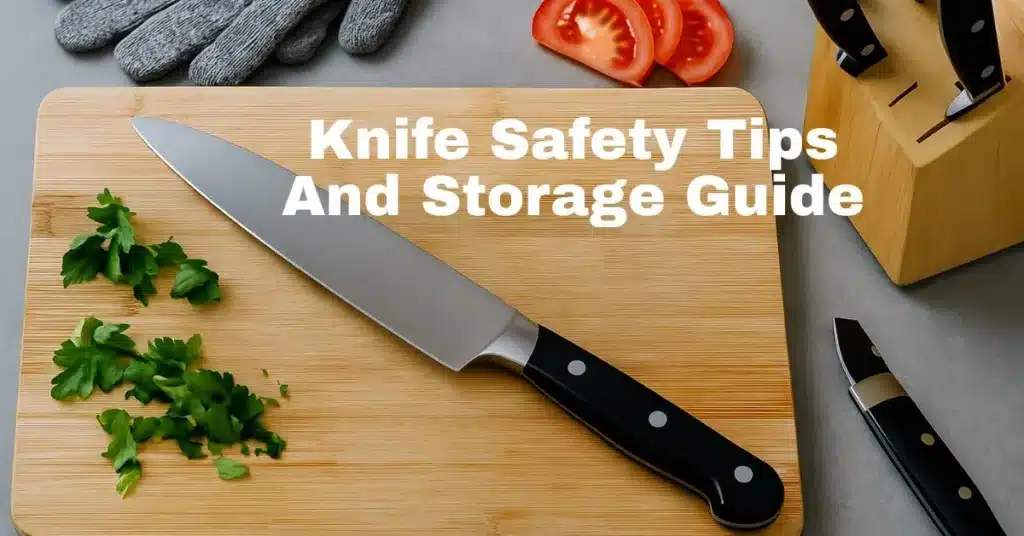
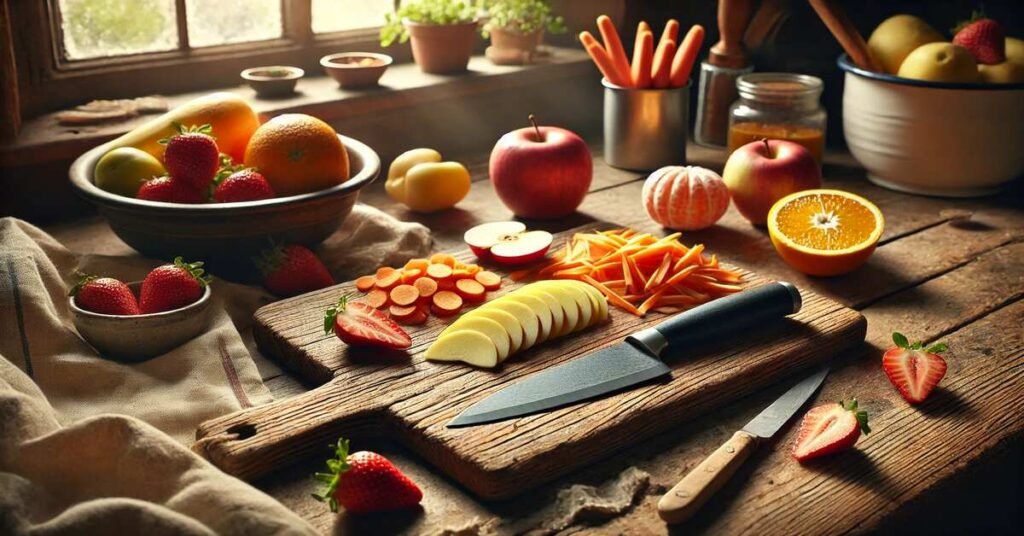
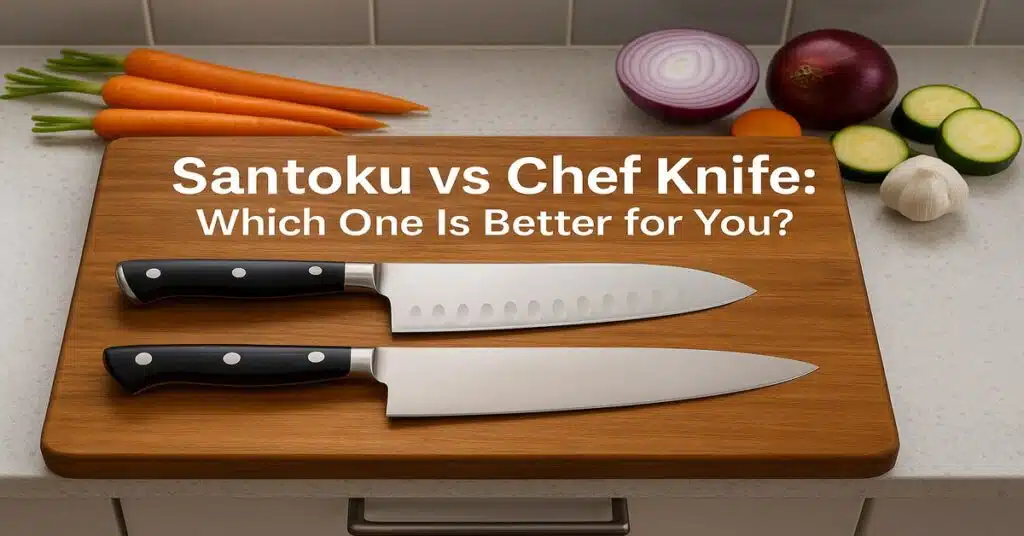
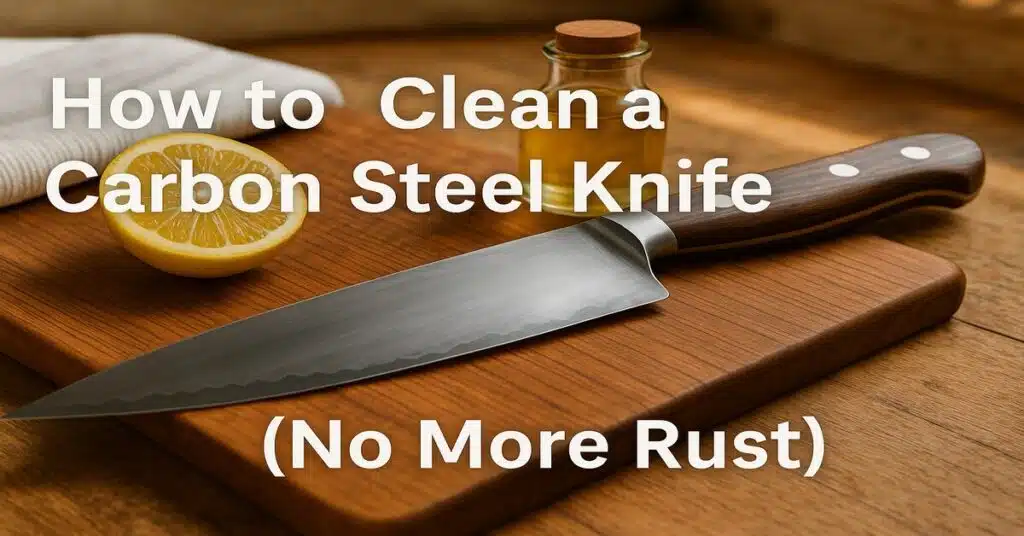

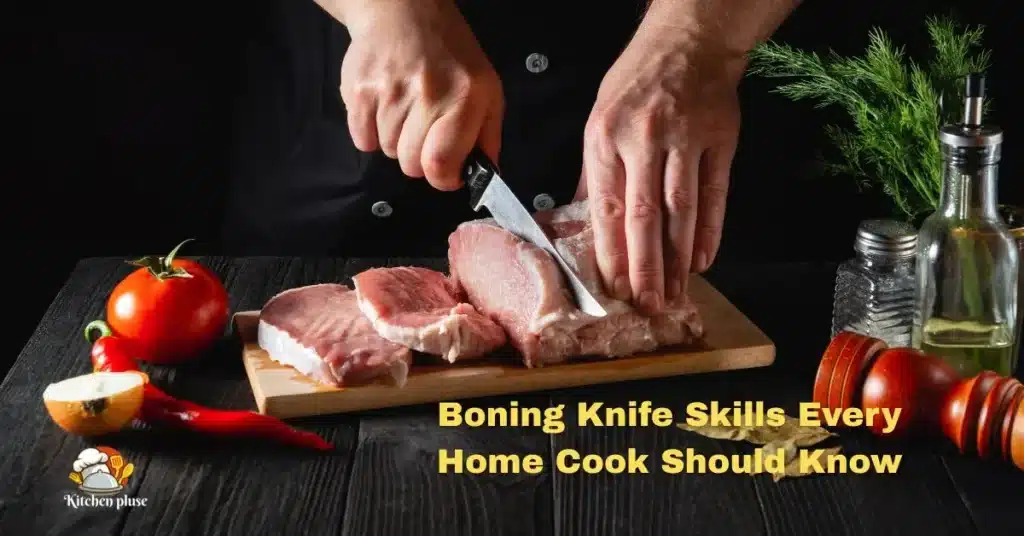
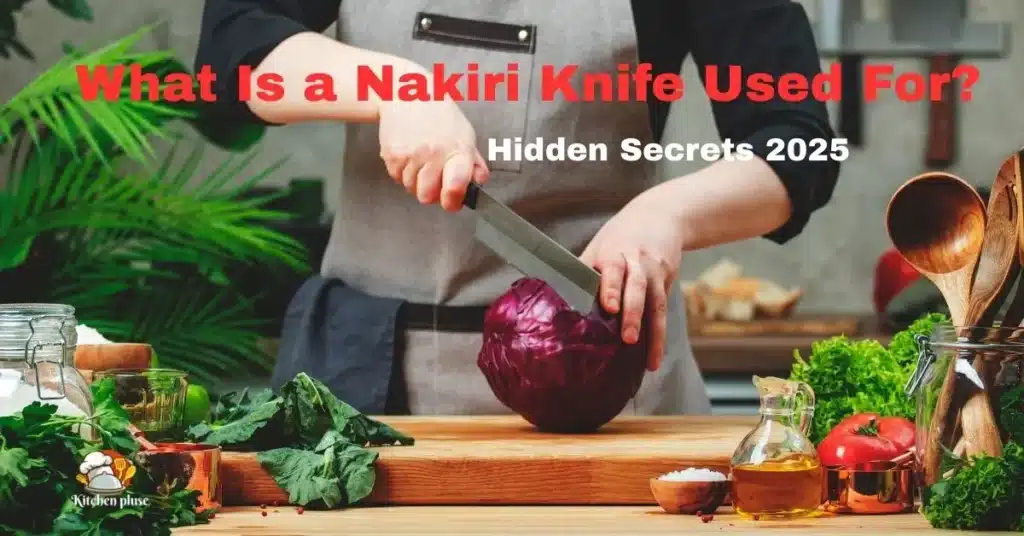
![7 Pro Tips How to Sharpen a Fillet Knife for Clean Cuts [2025]](https://kitchenpluse.com/wp-content/uploads/2025/09/7-Pro-Tips-How-to-Sharpen-a-Fillet-Knife-for-Clean-Cuts-2025-1024x536.webp)
